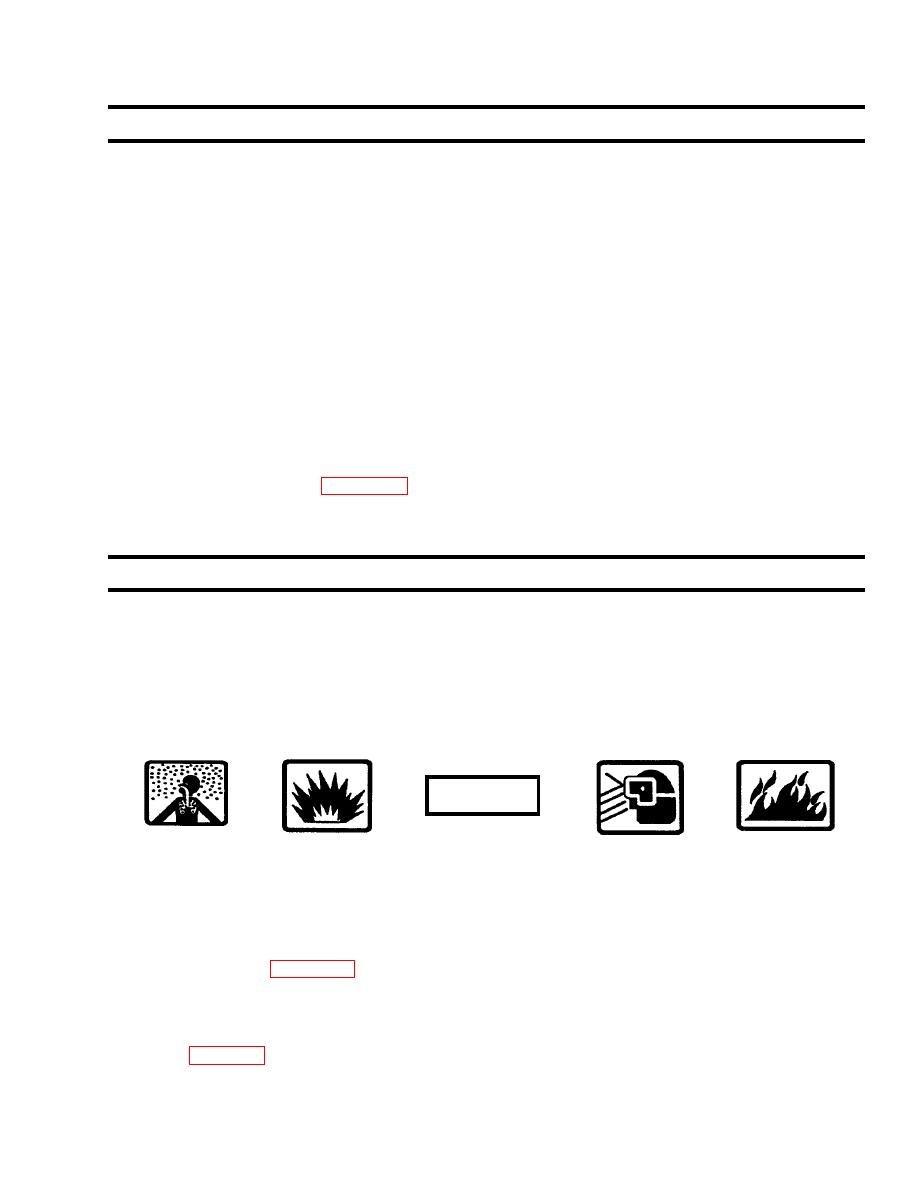
| Tweet |

Custom Search
|
|

|
||
 TM 9-2330-380-14&P
4-19. Inspection Instructions (cont'd)
b. Inspect drilled and tapped (threaded) holes for the following:
In or around holes- wear, distortion, cracks and any other damage.
Threaded areas- wear, distortion (stretching) and evidence of cross-threading.
c. Inspect metal lines, flexible lines (hoses) and metal fittings for the following:
Metal lines- sharp kinks, cracks, bad bends and dents.
Flexible lines- fraying, evidence of leakage and loose metal fittings or connectors.
Metal fittings and connectors- thread damage and worn or rounded hex heads.
d. Inspect castings, forgings and machined metal parts for the following:
Machined surfaces- nicks, burrs, raised metal, wear and other damage.
Inner and outer surfaces- breaks and cracks.
e. Inspect air lines, fittings and connectors for leaks by coating fittings and connectors with solution of
dishwashing soap (item 17, Appendix E) and water. No leakage is permissible.
a. Any repair procedure peculiar to a specific part or component is covered in the section or paragraph
relating to that item. After repair, clean all parts thoroughly to prevent dirt, metal chips or other foreign
material from entering any working parts.
b. Repair casting, forgings and machined parts using the following instructions:
Refer to TM 9-237 for instructions on repairing minor cracked castings or forgings.
WARNING
Dry cleaning solvent (P-D-680) is toxic and flammable. Avoid prolonged breathing of vapors.
Avoid skin contact. Use only in well-ventilated area. Keep away from open flame. Flash point of
solvent is 138oF (50oC).
Repair minor damage to machine surfaces with a fine mill file or abrasive cloth dipped in dry cleaning
solvent (item 3, Appendix E).
Replace any deeply nicked machined surface that could affect the assembled operation. Repair
minor damage to threaded capscrew holes with thread tap of same size, to prevent cutting oversize.
4-27
|
||
 |
||